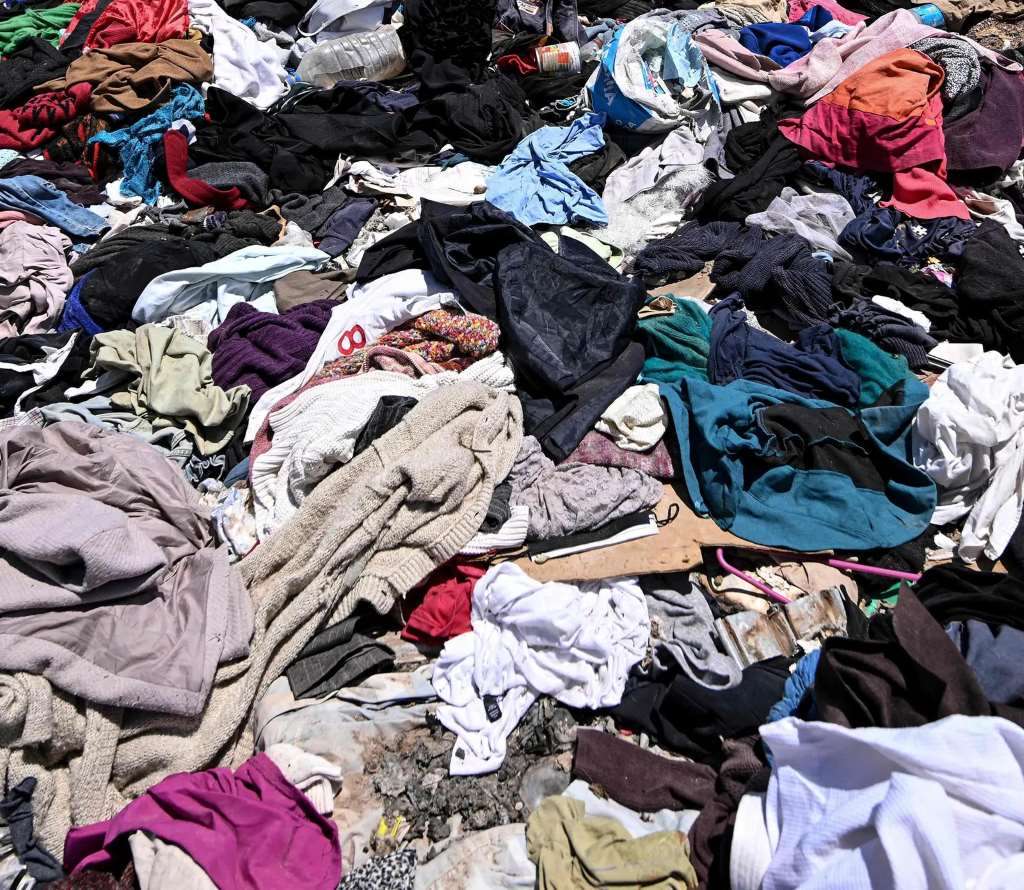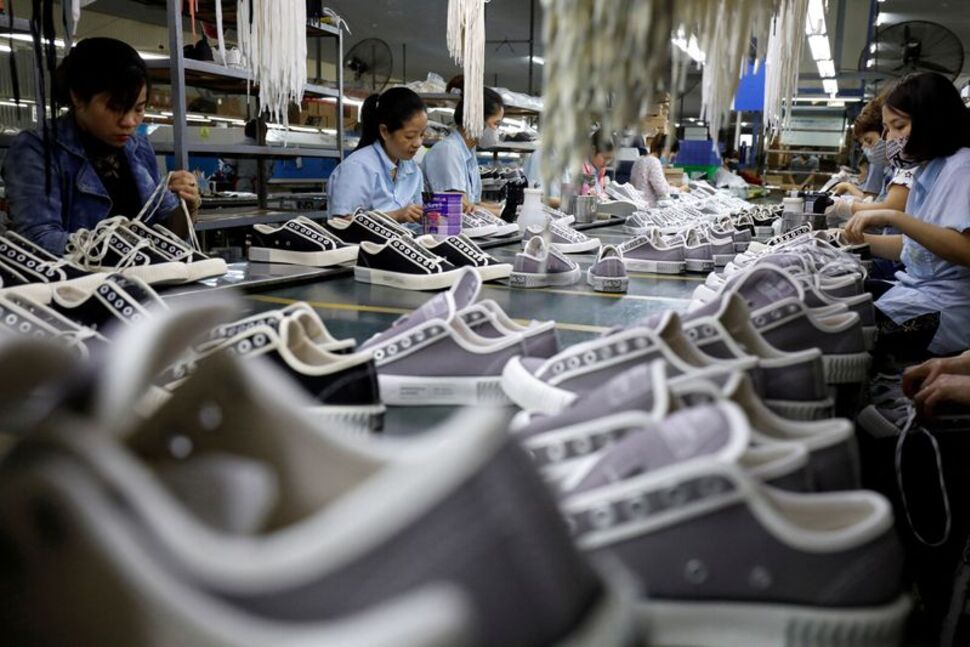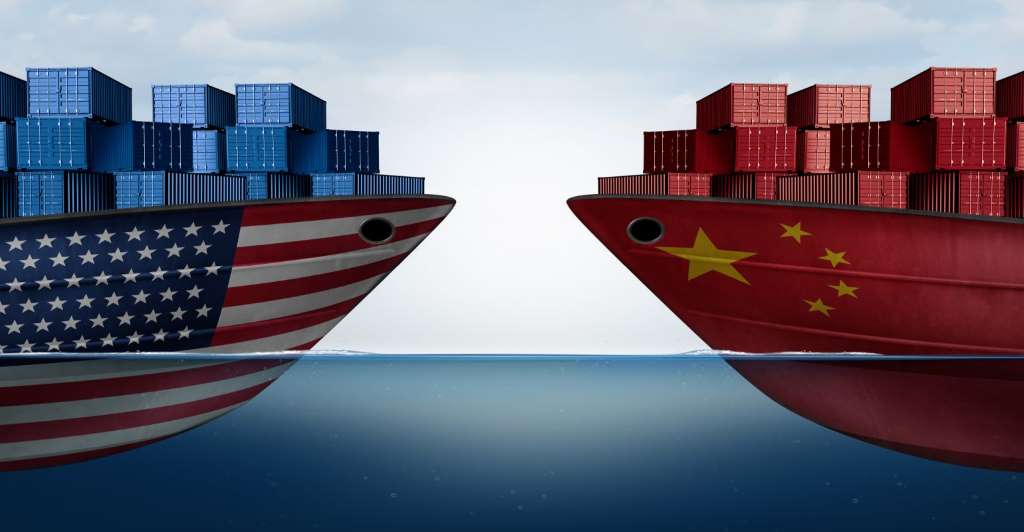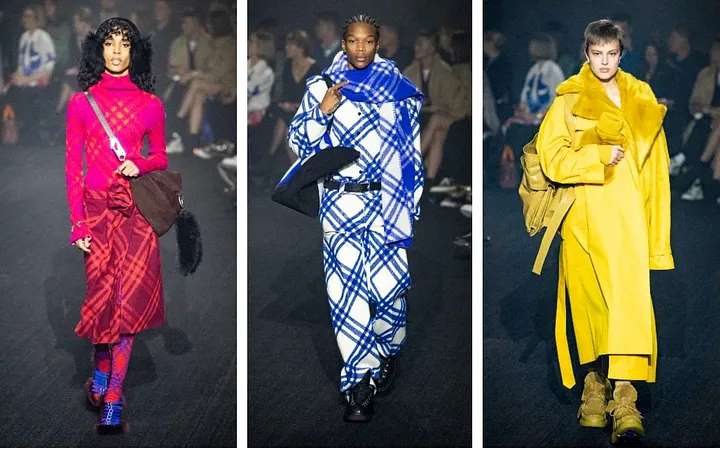FW
Marking a significant cultural shift in a country where, less than a decade ago, women were required to wear body-covering abaya robes, Saudi Arabia recently held its inaugural fashion show featuring models in a swimsuits. The poolside event showcased the designs of Moroccan designer Yasmina Qanzal, who presented a collection of mostly one-piece swimsuits in shades of red, beige, and blue. Many models had exposed shoulders, and some displayed partially visible midriffs.
Through this fashion show, the designer aimed to present elegant swimsuits reflecting the Arab world, notes Qanzal. Hosting the show was a groundbreaking moment for Saudi Arabia as it was the first event of its kind in the country, adds Qanzal.
The fashion show was held on the second day of the inaugural Red Sea Fashion Week at the St Regis Red Sea Resort, located off Saudi Arabia's western coast. This resort is a component of Red Sea Global, one of the ambitious giga-projects central to Saudi Arabia's Vision 2030, a social and economic reform initiative led by Crown Prince Mohammed bin Salman.
Since ascending as first in line to the throne in 2017, Crown Prince Mohammed has spearheaded a series of sweeping social reforms aimed at softening Saudi Arabia's traditionally strict image, which has been heavily influenced by Wahhabism, a purist form of Islam. These reforms have included reducing the influence of the once-dominant religious police, who previously enforced prayer times by chasing men out of malls, as well as reintroducing cinemas and organising mixed-gender music festivals.
While interacting with an APTMA delegation led by Kamran Arshad, Chairman-North Zone; Shafay Hussain, Punjab Minister for Industries, Commerce and Investment assured All Pakistan Textile Mills Association (APTMA) of expediting development of industrial parks in Punjab to boost apparel exports.
The delegation also included Asad Shafi, Senior Vice Chairman; M Ali, Executive and M Raza Baqir, Secretary General. The minister informed that the Punjab chief minister has recently set up a high-powered committee headed by provincial minister for industries to examine and understand the best practices across the world in general and Bangladesh in particular for the establishment and operation of garments cities on the pattern of 'Plug and Play Model'.
He added that such industrial parks will be equipped with the state-of-the-art infrastructure to attract foreign and local investors. The committee would make recommendations on all aspects of the setting up of Garments Parks either in the existing industrial estates or on new sites. Arshad applauded Gohar Ejaz, Patron-in-Chief, APTMA for proposing the vision of apparel cities in the province by constructing modern industrial zones dedicated to garment manufacturing.
These cities will attract local and international investors by leveraging competitive advantages like low-cost labor and favorable trade status, and boost textile exports by $12 billion, he added. These industrial zones are crucial for overall economic growth, as they stimulate industrial activity, attract investment, and foster economic development, he emphasised.
Shafi explained, each of these parks will be spread over 2,000 acre with five districts each. Around 400 stitching units of 2 acre each with a covered area of 100,000 sq ft will be established in each park. The parks will be built with an investment of $2 million each and house fully built up 100 garment factories with 1,000 stitching machines.
A delegation of Pakistan Coating Association (PCA) called on Chaudhry Shafay Hussain, Provincial Minister of Industry and Commerce at Tevta Secretariat to discuss the productivity of paint industry, import of raw materials and problems of the industry. On this occasion, an MoU was signed between Tevta and PCA to facilitate mutual cooperation in the preparation of courses and skilled manpower as per the requirement of the industry.
Hussain termed the MoU of cooperation with the paint industry as a welcome sign and assured that Tevta can provide skilled manpower to the paint industry. Courses related to the coating industry will be introduced in Tevta's institutions. A 3-year paint and ink modern course will be started in Tevta's colleges in Lahore while 6-month courses will also be introduced, Hussain added.
The proposed Mini Textile Park Scheme will benefit the Tiruchi weaving industry by streamlining production and sharing facilities among weavers.
The textile ministry is accelerating the establishment of small clusters in the town to enhance the textile sector's productivity. Firms joining this initiative will benefit from shared production facilities, reducing the need for outsourcing, explained a senior official from the Department of Handlooms and Textiles, Tiruchi.
The scheme offers financial assistance of up to Rs 2.5 crore to entrepreneurs. Initiatives like these could make previously unprofitable handloom operations viable by unifying their efforts, believe observers. The scheme is expected to be introduced in Tiruchi shortly.
The scheme will integrate modern concepts like effluent treatment facilities. It would help the sector thrive sustainably through proper monitoring of the textile industries in cities like Tiruppur, Coimbatore, and Erode, says P Rajappa, President, Tiruchi District Tiny and Small Scale Industries Association (TIDTTSSIA).
However, the requirement for participants to procure 2 acre might be challenging for many potential participants, notes Rajappa. A similar initiative could encourage local manufacturers to pool their resources, potentially transforming the region into an engineering production hub,” he adds.

The European Union (EU) has ushered in a new era for sustainable clothing with the implementation of the Corporate Sustainability Due Diligence Directive (EUCSDDD). This legislation, effective in phases starting 2027, will significantly impact the textiles and apparel industry, forcing brands to clean up their act and prioritize environmental and human rights considerations throughout their supply chains.
What does the EUCSDDD entail
The EUCSDDD mandates large companies (with over 1,000 employees and specific turnover thresholds) to conduct thorough due diligence across their operations. This means mapping their entire supply chain, from raw material sourcing to production and distribution, and identifying potential human rights violations and environmental damage. The directive focuses on:
Eradicating human rights abuses: Forced labor, unsafe working conditions, and discrimination are some of the concerns the EUCSDDD aims to address in the garment industry. Companies will be held accountable for ensuring ethical labor practices throughout their supply chains.
Combating environmental impact: The fashion industry is a major contributor to pollution and resource depletion. The EUCSDDD compels brands to identify and mitigate environmental issues such as water pollution from dyeing, excessive waste generation, and greenhouse gas emissions.
Map their supply chains: From raw material sourcing to production and distribution, companies must gain a comprehensive understanding of their operations' impact.
Implement action plans: Companies must demonstrate concrete steps to address identified risks. This could involve partnering with ethical suppliers, adopting sustainable materials, and promoting fair labor practices.
A turning point for the fashion industry
The EUCSDDD is a game-changer for the textiles and apparel sector. And there are several reasons for this. To being with it will increase transparency. Previously opaque supply chains will be exposed, forcing brands to be accountable for their sourcing practices. Consumers can expect greater transparency about the origin and production methods of their clothing.
It will boost sustainable materials and manufacturing as brands will now be incentivized to source sustainable materials like organic cotton and recycled fibers. Additionally, they will need to adopt cleaner production processes to minimize environmental impact.
Improve working conditions as the directive's focus on human rights will lead to better working conditions for garment workers, promoting fair wages, safe working environments, and freedom of association.
While the directive presents challenges, it also offers significant opportunities. Brands that embrace sustainability can gain a competitive edge. Consumers are increasingly demanding ethical and eco-friendly products, and the EUCSDDD can help companies cater to this growing market segment. The phased implementation of the EUCSDDD begins in 2027 with larger companies, giving them time to adapt. However, the directive is expected to have a ripple effect throughout the global fashion industry, as brands worldwide strive to comply with EU regulations to continue selling in the European market.
The EUCSDDD is a positive step towards a more responsible and sustainable future for fashion. It paves the way for a future where ethically produced, environmentally friendly clothing becomes the norm. As the directive unfolds, consumers can expect to see a significant transformation in the way their clothes are made and sourced.

The US-China trade war, marked by tariff hikes, has led to a surge in US imports from Vietnam. However, Vietnam's success in capturing market share from China comes with a twist: it relies heavily on Chinese inputs for its exports.
Statistics reveal a clear picture. Vietnam's trade surplus with the US increased to nearly $105 billion in 2023, more than double the figure in 2018. US imports from Vietnam more than doubled since 2018, exceeding $114 billion in 2023. Moreover, there's a strong correlation (96 per cent) between the value of Vietnam's imports from China and its exports to the US. China remains the primary source of raw materials and components for Vietnam's manufacturing sector, with electronics being the most prominent example (80 per cent import content).
The symbiosis
This situation creates a complex scenario. The rise in US-Vietnam trade reflects the movement of manufacturing facilities from China to Vietnam. This trend is likely driven by companies seeking to avoid US tariffs on Chinese goods. However, despite the relocation, China's role in the supply chain remains crucial. Vietnam heavily relies on Chinese imports for its exports almost one-third of Vietnam's overall imports originate from China. The significant trade imbalance with Vietnam might raise concerns in the US, especially after the upcoming elections. This could lead to a policy change towards Vietnam, potentially including tariffs. The US may view Vietnam as a loophole for Chinese goods to bypass tariffs. Also, Vietnam's dependence on raw materials from Xinjiang, a Chinese region with alleged human rights violations, puts additional pressure on the situation. Vietnam has already faced scrutiny from the US on this issue.
A lot of questions remain unanswered: So, will the US address the growing trade imbalance with Vietnam? How can Vietnam reduce its dependence on China for raw materials and components? Can Vietnam ensure its exports are not linked to human rights violations in Xinjiang?
Table: US-Vietnam trade
|
Year |
US imports from Vietnam ($ bn) |
Vietnam trade surplus with US ($bn) |
|
2018 |
52.3 |
42 |
|
2019 |
74.1 |
58.2 |
|
2020 |
88.7 |
72.4 |
|
2021 |
100.4 |
87.1 |
|
2022 |
114.1 |
104.8 |
As Vietnam seeks market economy status from the US, requiring a balanced trade relationship, higher US scrutiny could disrupt Vietnam's export-driven growth model. The US may have to choose between tamping down the trade gap and potentially raising import costs for consumers.
Vietnam's trade success is intricately linked to China. While it has benefited from the US-China trade war, its heavy reliance on Chinese components and potential human rights violations in its supply chain raise concerns for the US. The upcoming US elections and Vietnam's ability to address these concerns will be crucial in determining the future trajectory of its trade relationship with the US.

The American textile and apparel industry is facing a wave of uncertainty due to the recent announcement of tariffs and penalty clauses on imports from China. This move by the US administration has ignited a complex debate, with potential impacts on manufacturers, consumers, and China's textile exports.
Why the tariffs?
The US government cites unfair trade practices by China as the primary reason for the tariffs. These concerns include intellectual property theft, allegations of forced labor, and Chinese government subsidies that distort market prices. Proponents of the tariffs argue that they will level the playing field for American manufacturers who have struggled to compete with lower-cost Chinese imports. According to the National Council of Textile Organizations (NCTO), the US textile industry employed over 286,000 people in 2020. The hope is that these tariffs will level the playing field and create a more competitive environment. "These tariffs are a necessary step to protect American jobs and ensure fair trade practices," said a spokesperson for the US Department of Commerce.
Impact on US industry, a double-edged sword
The new tariffs are intended to level the playing field for US manufacturers, potentially leading to increased domestic production and job creation. "We believe this will create a more fair and competitive environment for American workers and businesses," stated a spokesperson for the US Department of Commerce.
However, some analysts warn that higher costs of imported materials could force US apparel companies to raise prices or source from alternative suppliers, potentially in countries with less stringent labor and environmental regulations. "While some domestic manufacturers might benefit, the overall impact on the industry could be muted," said John Draper, an analyst at investment firm AmeriTex.
American consumers are also likely to be the most directly impacted by the tariffs. Apparel prices are expected to rise, as the increased costs of imported fabrics and garments are passed down the supply chain. A 2020 study by the National Retail Federation found that tariffs on consumer goods could lead to an average price increase of 4.3 per cent. This could disproportionately affect low- and middle-income consumers who rely on affordable clothing options. "The increased costs will be passed down to consumers, who will ultimately bear the brunt of this trade war," said a representative from the Retail Industry Leaders Association (RILA).
China's shrinking American market
For China, the new tariffs represent a significant hurdle. The US is a major export market for Chinese textiles and apparel. A Grand View Research report highlights, the value of US textile imports from China reached an estimated $339 billion in 2021. These tariffs could lead to a decline in Chinese exports to the US, potentially impacting jobs and economic growth in the Chinese textile sector. "The Chinese government is deeply concerned about the US tariffs and urges them to reconsider this damaging policy," stated a spokesperson for the Chinese Ministry of Foreign Affairs.
Many small and medium-sized businesses in the US rely heavily on Chinese-made textiles and apparel. The increased costs associated with the tariffs could squeeze their profit margins and force them to adapt their sourcing strategies. Some businesses may choose to absorb the costs, while others may be forced to raise prices or look for alternative suppliers in other countries.
Imagine a basic cotton T-shirt. Currently, a large portion of these may be manufactured in China and then imported to the US. With the new tariffs, the cost of producing that T-shirt in China will increase. This could lead to:
Increased wholesale price: The Chinese manufacturer may raise the price they charge US companies for the T-shirt.
Price hike for consumers: US companies may then raise the retail price of the T-shirt to maintain their profit margins.
Shift in sourcing: US companies might explore sourcing from other countries not subject to the tariffs, though this may come with challenges like establishing new supply chains.
The long-term impact of these tariffs remains to be seen. The effectiveness of the tariffs in reviving the US textile industry will depend on various factors, including consumer spending habits and the ability of domestic producers to meet demand. Negotiations between the US and China could also lead to adjustments in the tariffs. One thing is certain: the new trade landscape will continue to have a significant impact on the global textile and apparel industry for years to come.

Burberry, the iconic British luxury brand, has shown mixed signals in its recent performance. The brand reported a 10 per cent increase in full-year revenue for the fiscal year ending April 1st, 2024. This translates to £3.1 billion. Attributable profit also rose to £490 million, compared to £396 million the previous year. However, the full picture is more nuanced. The growth came after a period of stagnation, and some analysts point out that it hasn't fully recovered pre-pandemic levels.
Not an industry anomaly
Luxury brands worldwide have experienced similar trends. While there's growth, it's not at pre-pandemic levels. The industry grapples with rising inflation and a cautious consumer. However, some brands, particularly those with a strong presence in China, have fared better.
It's difficult to say definitively if UK luxury brands are disproportionately affected. Burberry's performance can't be solely attributed to its nationality. Burberry's performance can be attributed to factors beyond just its nationality. However, it's worth noting that some analysts suggest European luxury houses, compared to their American counterparts, might be lagging due to a slower pivot towards online sales.
Revival plans and challenges
Burberry's new management implemented revival plans, including a focus on core categories like outerwear and leather goods. While there's been progress, full turnaround might take time. The "uncertain macroeconomic environment" as acknowledged by Burberry itself presents a challenge.
Meanwhile, China's recovery is crucial for Burberry. However, the country's strict COVID-19 policies can disrupt supply chains and consumer spending. Burberry needs to navigate this complex market effectively.
Burberry's strategic plans include continued investment in digital channels, a focus on sustainability, and a renewed emphasis on its British heritage. The success of these plans will determine the brand's long-term trajectory. Despite challenges, Burberry maintains its mid-term goals of achieving £4 billion in revenue and a 20 per cent adjusted operating margin. Here are some potential strategies:
Maintaining momentum in China: Burberry needs to navigate the complexities of the Chinese market while capitalizing on its current growth there.
Digital focus: Continued investment in e-commerce and online brand engagement is crucial for reaching a wider audience.
Product innovation: Lee's focus on reinvigorating Burberry's core offerings and brand identity seems promising.
Retail analyst Sarah Jones says, "Burberry's recent performance indicates a step in the right direction. However, long-term success requires a focus on brand differentiation, a strong digital presence, and navigating the complexities of the global market.”
Indeed, Burberry's story highlights the complexities of navigating the luxury fashion landscape. While there are positive signs, the brand's future success depends on its ability to adapt and innovate in a dynamic market.
Vidarbha ginners are once again up in arms over the Central Government’s decision to brand Vidarbha Cotton as Kasturi due to stringent quality compliance norms introduced from February this year.
A national workshop on ‘Branding Vidarbha Cotton as Kasturi’ was jointly organised by The Central Institute for Research on Cotton Technology (Circot), The Cotton Textiles Export Promotion Council (TEXPROCIL) and Vidarbha Cotton Association at the regional Ginning Training Centre on Amravati Road
ICAR stalwarts, cotton experts and industry players including ginners deliberated over the merits and demerits of the decision.
While the govt is inclined to implement the move with an aim of improving quality and benefiting farmers, ginners are worried about production issues ‘not in their control.’
The ginners are exhibiting similar apprehensions like they did during the implementation of quality control order for cotton bales by the Bureau of Indian Standards (BIS) last year. Following the opposition, the govt had deferred the move till August this year.
As BIS rating would mean legal complications and penalties, things like variations in variety of seed available to farmers, climatic conditions, pest infestation, poor picking practices, poor handling, storage and multiple pickings round the years were on the mind of ginners.
Officials said the govt would help clear their doubts. “Only Indian cotton is not marketed under any particular brand name. Hence, the govt branded it as Kasturi Cotton Bharat to give it a unique identity. There are certain quality norms to be met which the ginners don’t agree to,” they said.
Dilip Thakre, a farmer from Akola who is also cotton expert representing Vidarbha on various committees, said Kasturi entails premium cotton purchase by CCI from ginners. Around 300 ginners from cotton belt will be selected to supply good quality cotton to CCI. The bales would be marketed under Kasturi. Right now, India’s cotton is sold just as bales, he added.
Thakre said Indian bales don’t fetch good rates because of lack of a brand name and apprehensions about mixing substandard cotton. Under Kasturi, ginners will have to supply cotton of first picking. Trash content increases in second and third pickings. Yarn and designer fabric too would be manufactured using the Kasturi brand.
Geo-tagging will be done on each bale, comprising parameters like moisture content, staple length and trash content, he said.
The organisers of the trade show Tranoi Men have announced that they will no longer be holding the event in Paris in June. Originally scheduled for June 18- 25, 2024 during Paris Men’s Fashion Week, the fair will now shift its focus to the January 2025 edition. Boris Provost, Managing Director, communicated this change via email, stating that the organisation will instead concentrate on presenting a new event format that will highlight Japanese design during Tokyo Fashion Week in September.
Provost emphasised Tranoï Homme's established reputation in the designer segment, acknowledging the complexity and the need for patience and perseverance in business development within this sector. He stressed the importance of transparency and providing impeccable quality to customers and partners, aligning with the organisation’s ethics and standards. Therefore, they have decided to postpone their efforts to the January 2025 edition, which will feature a new event format focusing on Japanese design.
The inaugural edition of Tranoï Tokyo is scheduled from September 04 -05 at Bellesalle Shibuya, with over 50 designers and brands already confirmed to participate. Additionally, Provost assured that Tranoï Women will continue as planned at the Palais Brongniart during the women’s shows from September 26 to 29.
Since 2020, Tranoï has been owned by GL Events Group, which also holds a majority stake in Premiere Vision.
Cambodia's export of garment, footwear, and travel products (GFT) reached $3,763 million in the first four months of 2024, marking a 17 per cent increase from the $3,211 million reported during the same period last year, as per a report from the Ministry of Commerce
Cambodia’s apparel and textiles grew by 20.4 per cent Y-o-Y to $2,748 million from January to April 2024. As per a report by the Ministry of Commerce, footwear exports from Cambodia increased by 3.8 per cent Y-o-Y to $453.7 million.
Poullang Doung, Senior Economics Officer, Asian Development Bank-Cambodia, projected, the growth of the GFT sector in Cambodia would significantly boost its overall economic growth, which is estimated to reach 5.8 per cent this year. The sector has gained momentum since the last quarter of 2023, highlights Doung.
The GFT industry is a major foreign exchange earner in Southeast Asia and stands as Cambodia’s largest. It employs around 918,000 workers across approximately 1,680 factories and branches, with a significant majority of the workforce being female, according to the Ministry of Labor and Vocational Training.












